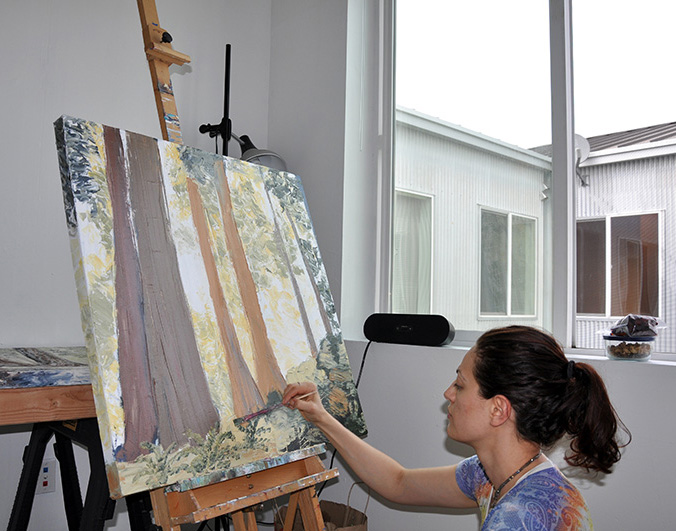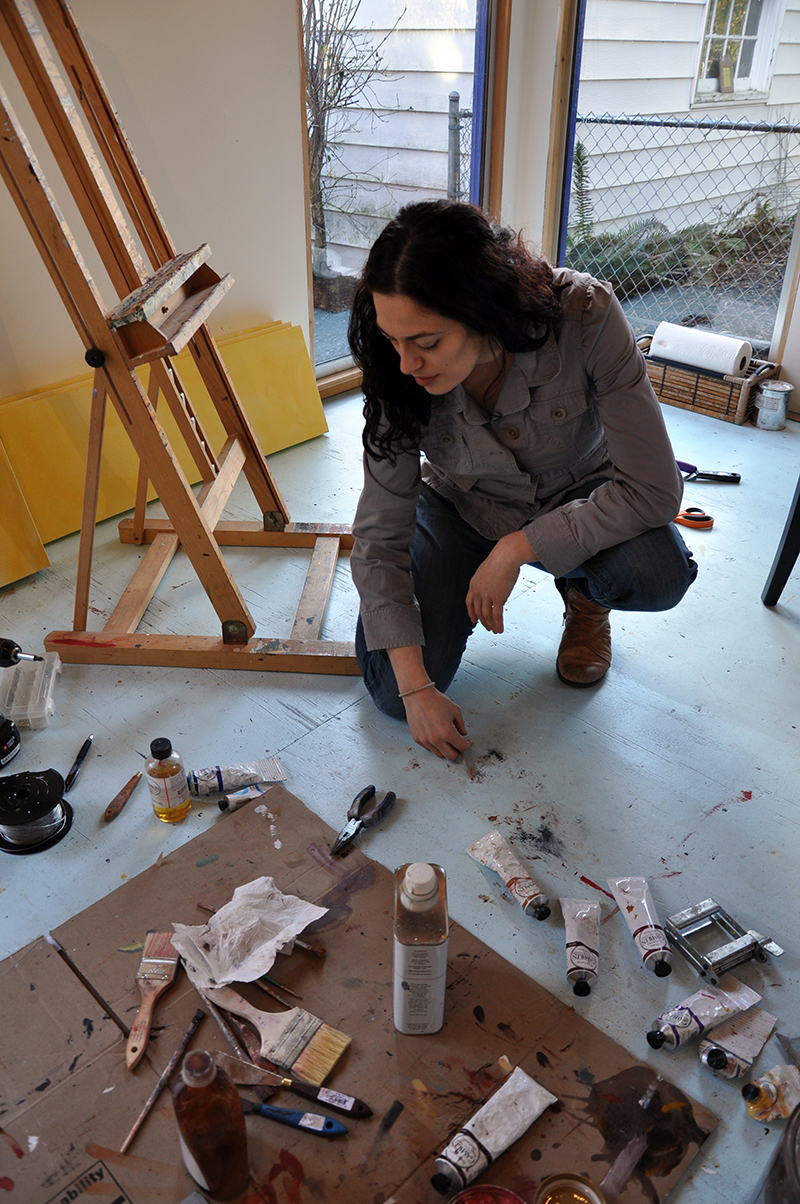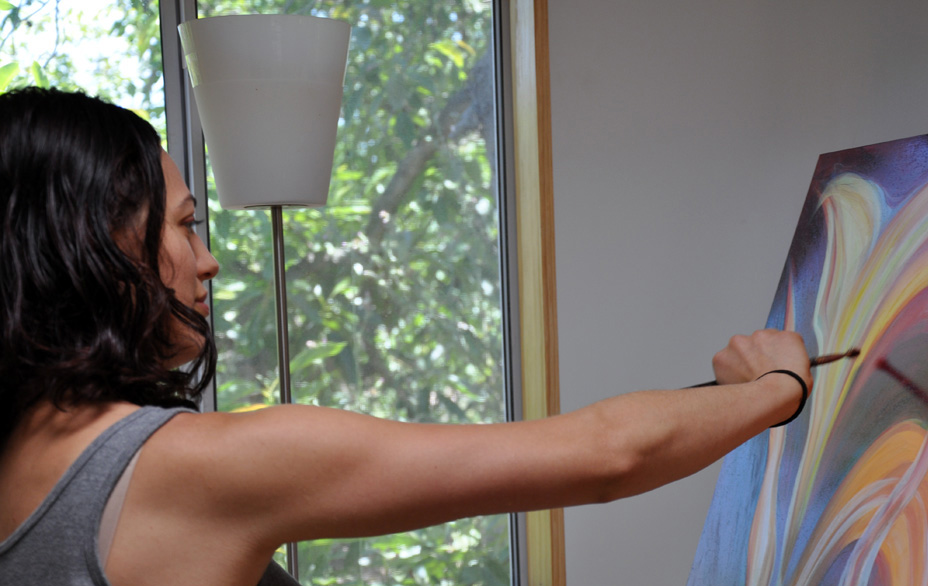People always ask me how long it takes to make my paintings.
I’ve been making video recordings of myself painting and while editing the hours of footage, I’ve noticed a couple things about myself.

One thing is that when working on a painting, I’ll work with painstaking focus for a period of several minutes, then I’ll step back from the painting, turn my head from one side to the other for a few moments, then jump back in with new resolve. It seems to be an unconscious and never-ending form of quality control that keeps me on track. Every few minutes I must reassess before I continue whatever I’m working on.
Another thing I noticed is that every so often, I’ll step back, stare blankly for a long moment, and heave a painfully loaded sigh while shaking my head and sometimes muttering under my breath or running my hand through my hair with frustration. I had no idea how often I did this until I saw it on video.
All of this confirms something I already knew: the process of art-making, at least for me, is 90% thinking, mulling, pondering, assessing, strategizing, etc., and only 10% actual execution.

Watching myself work is very different from what I experience while working. To the outside observer, it’s pretty slow and boring. It looks like not much is going on, and it seems to take me an awful long time to put down some paint. But while I’m in the thick of the painting experience, time seems to stand still in a way that’s hard to describe. It’s not that it feels like a breeze or is easy–it’s just that I’m in an inner world of focused abstract and visual thought that renders me unaware of the passage of time.
And before I ever even go to the easel and begin working, I’ve usually spent many minutes out of every day for weeks, or perhaps several minutes here and there for months or possibly years in advance, just thinking and making plans about what I’d like to do. Some of this thought is very direct and technical, like the plan to create a certain effect with a paintbrush or the plan to use a certain color combination. But much of it is purely visual–a million tiny mental notes of things I see that are pleasing to me, in reality, in my dreams and imaginings, in my past art, and in other people’s art and photographs. Everything I paint is built upon all my prior artistic experience merged with my current intentions. Sometimes I get an idea for a painting and don’t actually use that idea until years later when I have the necessary experience, a missing puzzle piece in the concept, or a renewed interest in pursuing it.
This is why it’s always been so hard to answer the single most common question I get from people about my art: “How long does it take you to do that?” Because so much of my working process happens in my mind, and so much of that happens at times when I’m not actually working on the painting, it’s impossible to really say. Do I count the time I spend thinking about what I’m going to do, why and how I’m going to do it? (As if I even could.) And if I don’t count that time, and only state the amount of time I spent actually applying paint to canvas, is that an honest answer? I mean, without the introspection, dreaming and analysis involved in making art, there would be no art, period. I would never get to the stage of execution.

So when someone asks me, “How long did it take you to make that painting?” I’m always tempted to say “It’s taken me my whole life up until this point,” and although it’s an honest answer, it sounds facetious or possibly evasive. But if I say “It took about 30 minutes of sketching, then 6 hours of painting spread over a 2-week period,” that doesn’t seem like an accurate answer and it doesn’t really give any sense of how much thought and creative energy I’ve put into that work. So I normally end up hemming and hawing and saying, “Well…it’s kind of hard to say. Because I keep coming back to it over time rather than doing it all in one sitting, I’m not really sure how much time goes into it.” I haven’t come up with a better answer yet. Maybe next time I’ll say “None of your beeswax.”
———————————————-
This excerpt from one of Robert Genn’s letters is relevant to what I’m talking about here:
For visual artists, directing the torch of our imagination is our main art…..You need to see your art as a state of becoming. Vigilance and attentive observation during work-in-progress provides the opportunity. The process takes place with individual works, and over a lifetime of trial and error.